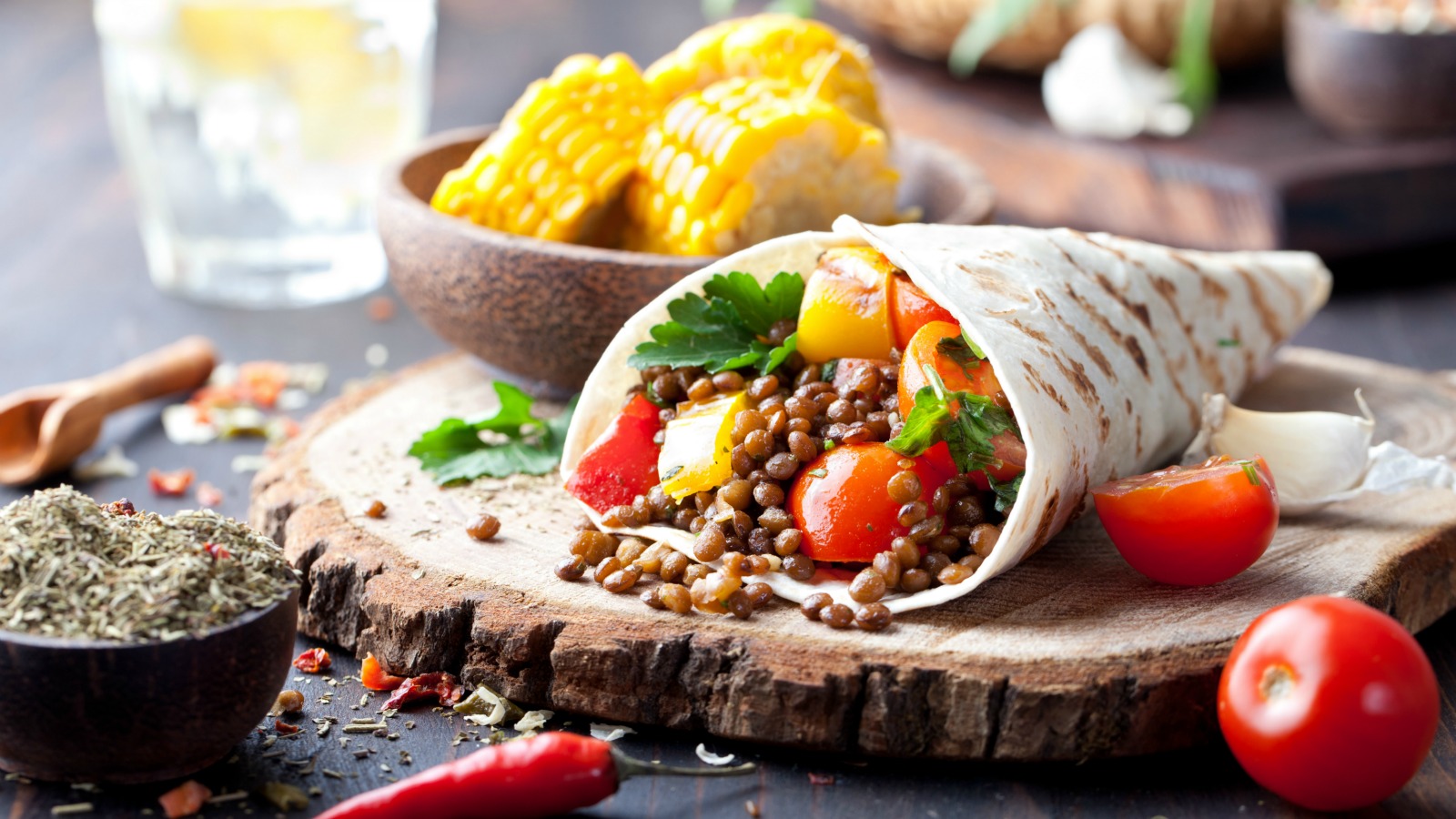In 2014, the Humane Research Council interviewed a large group of former vegetarians and vegans. When probed about which elements of the lifestyle had proved difficult, 60 percent of former vegans said that they disliked that their diet made them “stick out from the crowd.”
Dining in restaurants can be challenging for new vegans precisely because it tends to evoke that feeling of difference. The ideal restaurant scenario is one in which a menu offers ample vegetarian or vegan options. Depending on where you live, you may have access to many such places already, and they’re multiplying quickly.
At the moment, though, eating vegan at a restaurant often means asking questions about ingredients and preparation methods, and sometimes it means having the courage to request modifications — all while respecting a kitchen’s limits, a chef’s vision, and a server’s time and energy.
But I’d argue that willingness to ask for modifications and creatively pair together different menu items is often the difference between accepting a paltry appetizer salad (or the dreaded roast vegetable plate) for dinner, and having a truly satisfying meal. Vegan restaurant dining is often a lot more fun when you (kindly, respectfully) request creative substitutions — and this means having the confidence to stand out a little in a crowd of diners.
The single tip hat has served me best in vegan restaurant dining (and in traveling and navigating catered events) is to call ahead. This is especially helpful if you’re headed to a work meal with colleagues, dinner with your significant other’s parents, or any other situation in which you won’t want to ask a lot of questions once you get there. Politely tell the host or hostess that you’re vegan and ask if there are items on the menu that can be easily veganized. Usually, restaurants are more than happy to have a conversation with you about this — especially since it means that the wait staff won’t have to relay too many of your questions to the chef later on, during service.
If asking for modifications and standing out in your crowd of friends or family doesn’t sit right with you, you may simply prefer to accept the available vegan options and have a snack when you get home. Or you might make exceptions with non-vegan food in restaurants. This is OK — and it’s part of figuring out how to make a plant-based diet sustainable and pleasurable within the confines of your own life.
Here’s what to do when you get to the restaurant:
- Scan the menu for salads that are already vegan or could easily work without bacon, cheese, or other animal products.
- Check entrées for vegetable and/or grain accompaniments; even if you see an animal protein as the centerpiece, it may be served with farro, or a root vegetable purée, or roasted vegetables, and these may be on offer as a full portion if you request it.
- Look out for soups (bean soups in Italian restaurants, puréed vegetable or split pea soups in New American eateries, pistou or lentil soup in French restaurants), and ask your server if they’re made without dairy, ham, butter, or chicken stock.
- Keep your eyes peeled for beans and grains on the menu: Even if they don’t appear in a vegan dish, the restaurant carries them, which means that you may be able to add them to a salad or a vegetable plate for extra heft and nutrition.
- Be sure to inquire about non-vegan products that might have snuck into the cooking process, even in a dish that’s meatless as listed. Is the rice cooked with chicken stock? Does the pasta contain eggs? In Thai and Vietnamese restaurants, is a main dish made with fish sauce or flakes? It can be a drag to make these inquiries at first, but it becomes second nature over time.
Of course, there are many restaurant settings in which you won’t have to ask too many questions to find a great vegan meal option. Here are some of my standby options at different types of eateries. (It’s worth noting that if you’re specifically trying to find a vegan-friendly eatery, the Happy Cow website is invaluable.)
American
I’ll always give a restaurant menu a quick glance for appetizer options like vegan-friendly dips (hummus, white bean dip), salads, and soups. For a main course, I’ll look for dishes with rice or legumes, tofu, a grilled vegetable plate, or a veggie burger. If none of that is on offer, I’ll opt for two appetizers and a vegetable side (like sweet potato fries or roasted beets).
Italian
Most dry pasta is vegan, though house-made pasta is likely to contain eggs, so be sure to ask about your options. My go-to at Italian joints is spaghetti and marinara, as it’s almost always vegan-friendly. Many risottos can be made vegan, and if that’s not possible, antipasti offerings are often very easy to mix-and-match into a flavorful meal.
Mexican
Mexican restaurants feature a lot of vegan-friendly options, including rice and beans, vegetable fajitas, black bean soup, big salads with guacamole, and vegetarian burritos (modified to omit sour cream or cheese). As always, don’t be afraid to ask if any pork sneaks into the rice, for example, or if there’s any lard or butter in the tortillas.
French
For the most part, Provençal restaurants will be a safer bet than other types of French cuisine. My go-to dishes are roasted beet salads, lentil soups, niçoise salad without the tuna and egg (sounds crazy, but the olives, potatoes, and beans are surprisingly satisfying together), or a warm plate of ratatouille.
Indian
Indian food is naturally vegetarian-friendly, though whether or not dairy is included in many of the dishes can depend on the region represented and the restaurant itself. Chana masala, aloo gobi, dal, eggplant bharta, and many other dishes are usually vegan. Be sure to ask if dishes are made with either ghee or milk, but for the most part, a dinner of legumes and basmati rice is sure to be possible — not to mention very satisfying.
Ethiopian
Most Ethiopian restaurants will have a specific vegetarian platter that includes plenty of vegetables, legumes, and grains. Best of all, most injera is vegan, so you don’t have to skip it!
Greek & Middle Eastern
Vegans have plenty to savor at most Mediterranean restaurants. Start with some hummus or baba ghanoush and pita bread (both are almost always vegan). Follow up with baked vegetables or a vegetable kebab, a fresh salad, any rice pilaf, and small vegetable dishes, like olives, stewed eggplant, or sautéed greens.
Thai
Many curry and vegetarian noodle dishes are made with coconut milk, which means you don’t have to worry about dairy. Be sure to inquire whether any type of fish sauce is used in sauces. Summer rolls and papaya salads make for easy appetizer options.
Japanese
Vegetable sushi rolls are almost never a problem, and many types of appetizers, from miso soup to edamame to ohitashi, are sometimes vegan. If you happen to see a cold or hot tofu dish, it’s a wonderful opportunity to add some extra protein to the meal.
Of course, making special requests isn’t always possible: Sometimes the restaurant is simply too busy for this to feel reasonable. Sometimes you’re at a corporate meal with a limited and pre-selected menu. Sometimes the kitchen isn’t open to modifying dishes, which is of course a restaurant’s prerogative. In these cases, just do your best.
I embrace situations like these as a reminder that part of the joy of restaurant dining has nothing to do with the food: It’s the chance connect with friends, family, or coworkers. It’s about breaking bread in good company, and I can enjoy this experience even if my meal is imperfect.
Working with limited options can be a good exercise in appreciation, too, a reminder that we don’t need endless options in order to eat well.



